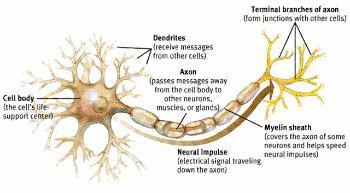What is MLD?
 Metachromatic Leukodystrophy (MLD) is a rare, genetic, degenerative, neurometabolic disorder that affects approximately one in 40,000 people (primarily children) worldwide. It is an inherited disease, but parents are typically not affected. At present, it is a disease for which there is no cure. Those affected with MLD are deficient in the arylsulfatase-A enzyme, which is responsible for breaking down fatty substances called sulfatides into harmless chemicals. A person with MLD cannot break down these sulfatides, causing them to accumulate in the body. This accumulation causes the destruction of myelin (demyelination), which is the protective covering on the nerve fibers that enables communication between the nerves and the brain.
Metachromatic Leukodystrophy (MLD) is a rare, genetic, degenerative, neurometabolic disorder that affects approximately one in 40,000 people (primarily children) worldwide. It is an inherited disease, but parents are typically not affected. At present, it is a disease for which there is no cure. Those affected with MLD are deficient in the arylsulfatase-A enzyme, which is responsible for breaking down fatty substances called sulfatides into harmless chemicals. A person with MLD cannot break down these sulfatides, causing them to accumulate in the body. This accumulation causes the destruction of myelin (demyelination), which is the protective covering on the nerve fibers that enables communication between the nerves and the brain.
There are several forms of MLD:
- Late infantile — affects children under 4 years of age and is the most common form of the disease. Motor milestones and some cognitive functions are lost. The disease progresses rapidly and death typically occurs within 5-6 years.
- Early juvenile — affects children aged 4-6 and is evidenced by a lost of motor milestones along with learning and behavior impairments. Death typically occurs within 10-15 years.
- Late juvenile — affects children anytime between the ages of 6 and 16. This form of MLD is often displayed by personality and behavior changes and dementia. Disease progression is slow.
- Adult — this form of the disease is very rare and symptoms include personality and behavior changes along with dementia. As with the late juvenile form, disease progression is very slow.
Bone marrow and stem cell transplants have been successful in slowing or stopping MLD in patients who do not have any symptoms. In the late infantile phase, which is the most common and most aggressive form of the disease, transplants can generally only happen with younger siblings of patients who have been diagnosed with MLD.
In the case of the Evanoskys, John and Christopher were diagnosed with MLD when they were 3 years old. Upon learning of the twins’ diagnosis, the Evanoskys immediately had Jack tested, and they learned that he also had MLD. Because of Jack’s early diagnosis at 13 months, his symptoms had not significantly progressed and he was able to receive a stem cell transplant. Click here to follow Jack Evanosky’s stem cell transplant journey.

